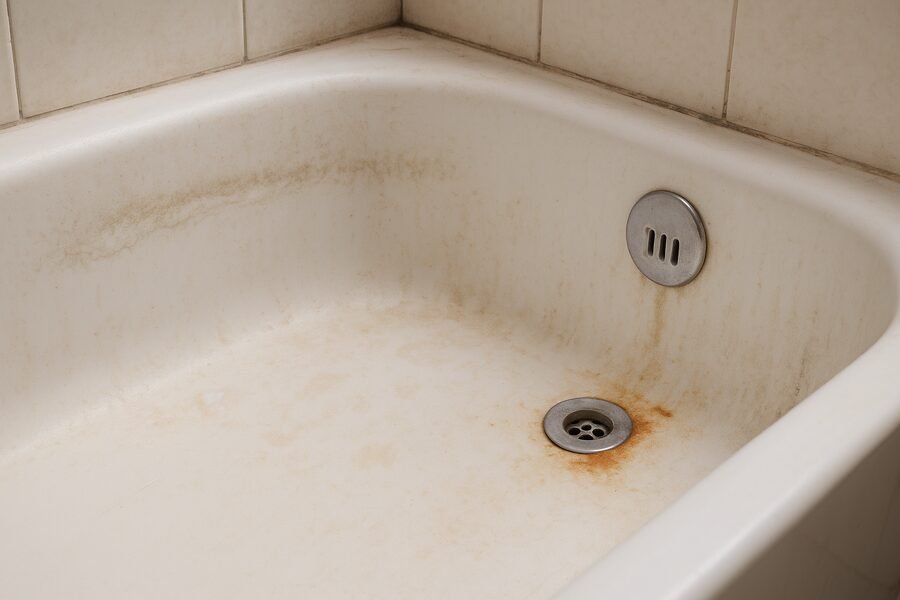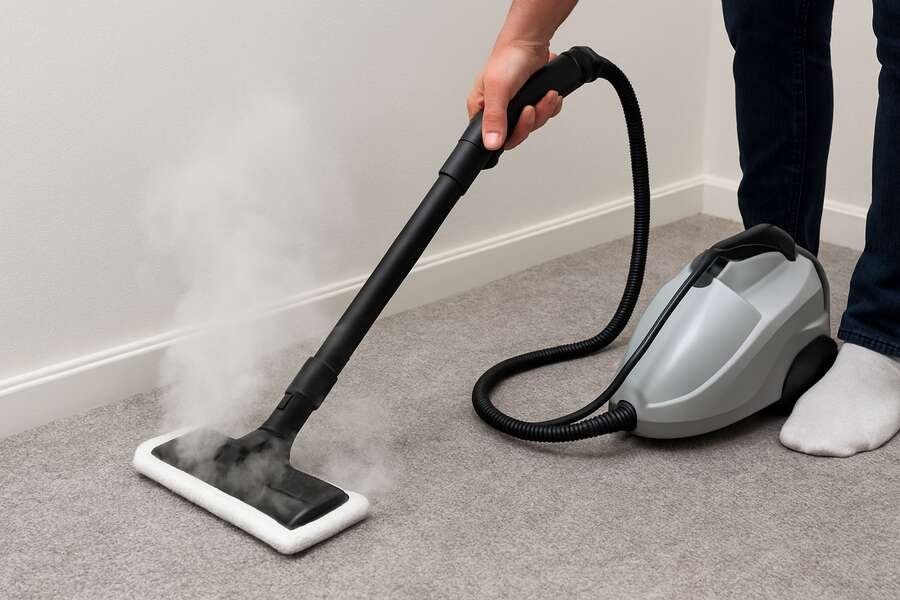Tips for Removing Bathtub Stains Effectively

Tips for Removing Bathtub Stains Effectively
Have you ever gotten into your bathtub to unwind with a soak and looked at some very persistent stains that can spoil your mood? Stains on the bathtub are not only ugly but also give you the impression of filth, even when you clean your bathroom thoroughly. It can be soap scum, rust, mildew or hard water stains, but they may prove very stubborn. It is not to worry, however. You can be a professional when you clean bathtub stains and give the bathtub the vibrant sheen with the appropriate methods and a pinch of knowledge.
Through this guide, we will walk you through all the causes of common stains, their best cleaning solutions and how accurately you can restore your tub without affecting its surface.
1. Learning About the Stains in the Bathtub
Before Bond Cleaning Maroochydore, recognise what kind of stains you have in your tub. Soap scum is water and soap in an opaque, viscous state. The whiteish stains or spots caused by the deposits of calcium and magnesium on the water are the result of hard water. Orange or reddish marks due to iron or corroded fastenings are rust stains. Mould and mildew also love humid, dark places that lack ventilation, and thus appear as dark spots or slimy spots. Knowledge of them can assist you in the selection of an appropriate cleaning technique.
2. Collecting Indefinite Cleaning Supplies
You have to have the right solutions and tools to clean like a pro. The baking soda, white vinegar, hydrogen peroxide, lemon juice, as well as mild dish soap are the popular ones. To clean more stubborn stains, a bathroom cleaner can be used. A spray bottle, soft sponges or microfiber cloths to scrub without causing any damage and an old toothbrush to clean the hard-to-reach sections will come in handy. And do not forget to put on rubber gloves to protect your hands when cleaning. These supplies guarantee good cleanliness of stain removal without scratching or damaging the surface of the bathtub.
3. The Process of Eliminating Soap Scum
One of the most ordinary problems is soap scum, and there is a simple home preparation that helps to eliminate this problem. Put the same amounts of dish soap and white vinegar in a spray bottle and spray a heavy coat of the mixture all over the areas affected. Let it stand 15-20 minutes in order to dissolve the sticky material. With a delicate sponge, get rubbing in circles until the nuisance comes, and after that, wash with warm water. Vinegar solution is best applied by first sprinkling on some baking soda and following it with a spray of the vinegar solution to treat especially hard stains. This will provide it with a soft scrubbing effect and advance the clearing capabilities without damaging the tub.
4. Removing Hard Water Deposits
Bathtub stains may cause a stain on a simple bathtub. Attack them with natural acidity, i.e. rub half a lemon on stains to wash away minerals or spread a mixture made up of baking soda and vinegar to form a paste. Rub it in for 20 minutes, erase using a sponge and wash using warm water, leaving a perfect finish. Drive off residues that cause build-up by drying the scrubbed tub after use to deny water spots an inch.
5. Remove Rust Marks
There also may be tough rust stains to deal with, but a paste is the best remedy. Mix hydrogen peroxide with baking soda to form a paste that they use to slather over the rust stains. Leave it there, 30 minutes, to loosen the stain. Then wash the region a little with a soft brush or sponge, and flush. Do not utilise steel wool or abrasive pads because they may ruin the finish of the bathtub and make the situation even worse. This method never harms your tub but still enables you to get rid of rust.
6. Seeing off the Mould and Mildew
Mould and mildew do not just make your bathtub appear dirty, but also can have an effect on your health. To get rid of them, all you have to do is spray hydrogen peroxide on the affected spots and leave it there to dry out within 10 minutes. The solution destroys the mould spores and removes the loosening of the stains. Use an old toothbrush to get into the tight corners and rinse the area. This is so that the mould may not develop by ensuring that the bathtub is thoroughly dry. To prevent mould and mildew, it is always recommended to make the bathroom more airy, either through an exhaust fan or leaving the window open during whilst taking a shower and after, as well.
7. Thorough Cleaning to Look Very Bright
To have a professional clean, go through a deep-cleaning exercise. The first thing to do is to fill up the tub with hot water and add two cups of vinegar. Soak it in a pan of water for around 15 minutes to soften any stubborn stains. Pour out the water and put some baking soda all over the surface. Thereafter, ensure that the bathtub is perfectly dry such that mould does not grow. To prevent mould and mildew, there is always a good recommendation to ensure that the bathroom is well ventilated by either placing an exhaust fan or even opening a window during and after a shower.
8. Blocking Future Stains
Cleaning your bathtub is more convenient than cleaning stains that are hard to get rid of. After taking a bath or shower, first, clean the tub by wiping it and rinsing to avoid water rings and soap residue. Clean fixtures regularly to prevent rust build-up stains, clean daily with a shower cleaner to make the job easier and possibly install a water softener to minimise hard water problems and make it easier to keep long-term.
Conclusion
Following these pro tips will allow you to never again have a problem with any stubborn bathtub stains. The next time you find them forming, you will be in a position to know how to attack them in order to ensure that your bathroom is in perfect condition daily.



